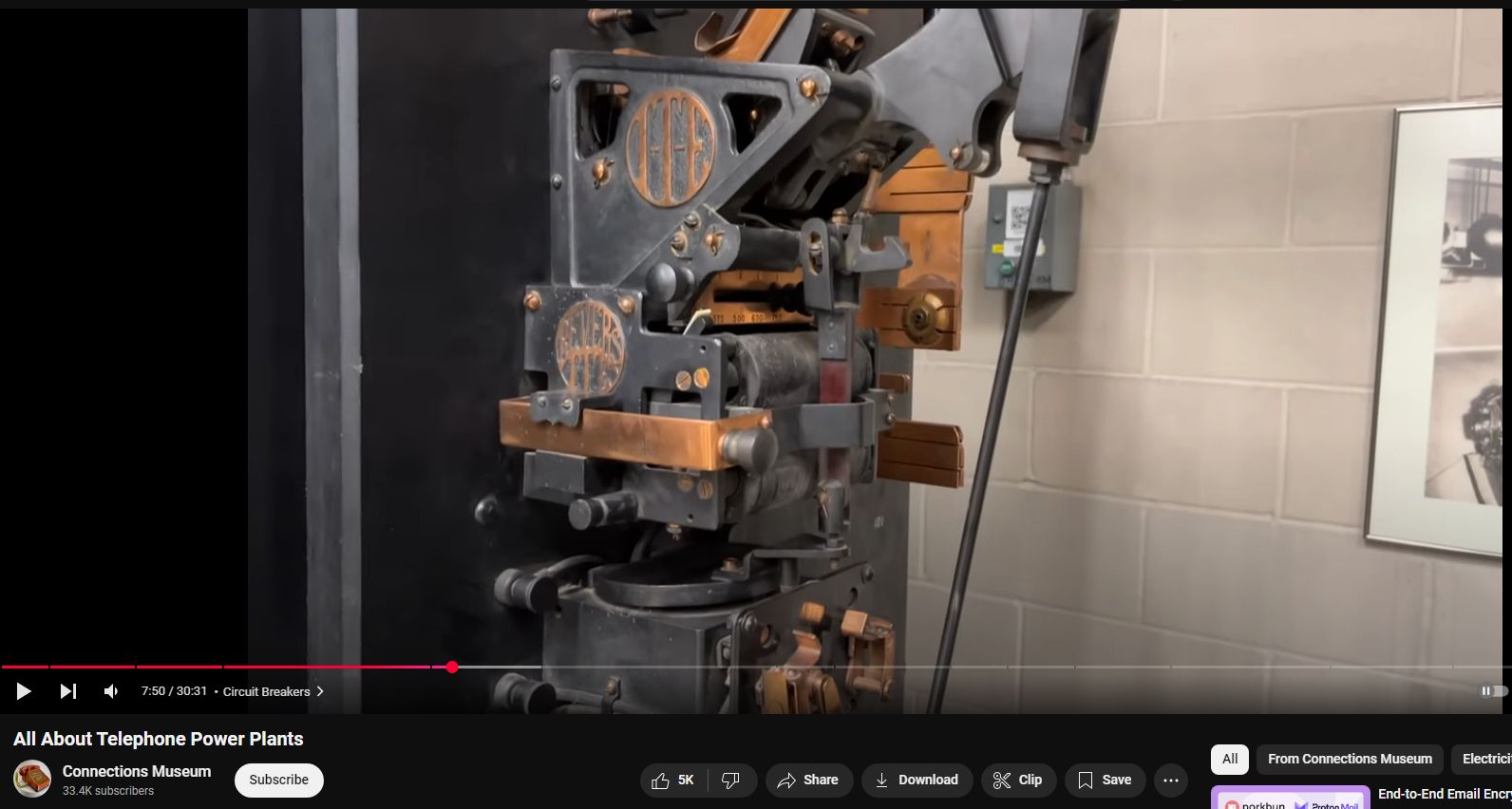Telephone Power Plants
An interesting technical explanation of how and why the phone system went down immediately following broadcast of JFK shooting. Commenter notes same effect after Elvis death.
As an electrical engineering student in the early 1990’s I went on a field trip to visit a telephone exchange. We were shown into a huge room with many channels in the floor designed to carry many cables. Most of the room was empty except for a couple of racks of equipment in one corner and only a handful of cable channels had a couple of wires in them. We students assumed that this room had been designed for future expansion. In reality, it was just the opposite: the exchange had been upgraded to all-solid state equipment and subscriber lines were multiplexed in decentralized equipment cabintes, so all that was coming and going into the exchange were a handful of fiber optic cables!
Working for one of the independent telcos in FL many years ago, I was working in a CO when the power went out, the diesel generator attempted to crank over, and the starter battery promptly exploded. I thought the building had been struck by lightning. When the system gave up trying to crank that one, the turbine secondary generator whined to life a minute later. Trying to figure out the location where we’d been hit, we walked through the whole building, and when we came to the generator room, the carnage of the blown starter battery with shards of plastic all over the room and freshly sprayed acid made me very glad we didn’t typically have any reason to be in there.
I spent 16 years as a C.O. tech (a so called 4 wall tech). When it was time for the yearly BOD test the part I always was concerned about was the coup de fouet readings. Watching the voltage drop and waiting for the bottom and the slow rise back to the operating voltage was always stressful regardless of the fact that it always did come back up. A 100 Gig circuit down was less stressful than almost any power issue. Thanks for the video. Most folks don’t realize how sophisticated a communication network was and is today. A cell phone call in a car on the interstate that doesn’t drop is a modern miracle that people take totally for granted.
The story about Kennedy’s assassination causing the switch overload reminds me of an incident when I was a teenager living in Memphis, TN. In mid-August of 1977 I was home working on my mini telephone office I had setup in a metal building in my parent’s back yard. At some point I went into the house and mom was watching TV. At that moment, a very somber news bulletin interrupted her show to announce that Elvis Presley had died after being found slumped over in the master suite bathroom at Graceland. After the initial shock, mom and I both headed to our separate phones to call friends. Both phone lines were served by a crossbar 5 system and getting dial tone was difficult. It was mostly the hum of the office power over the phone until the dial tone finally kicked in. Even then, every single number dialed was met with a fast busy signal indicating busy trunks. I eventually got my call through via persistence, but mom had to wait a while to call anyone. So many people in Memphis were trying to call friends, all at once, who were Elvis fans to give the news and it seemed to overwhelm switches all over Memphis.
What an excellent will made video. My knowledge is with X-ray equipment. When I started working installing and repairing X-ray machines in the 1970s many of the systems out in rural hospitals and clinics still operated on relays and vacuum tubes. I recall working on an one million volt industrial X-ray unit that used a dynamotor to convert power. That machine was used to inspect the fuse inside 155mm shells. Back when I was a child in the 1950s I recall going into the local independent telephone office and watch two women work the plug and cord switchboard. The blue glow from the big rectifier tubes in the back office was very eerie.
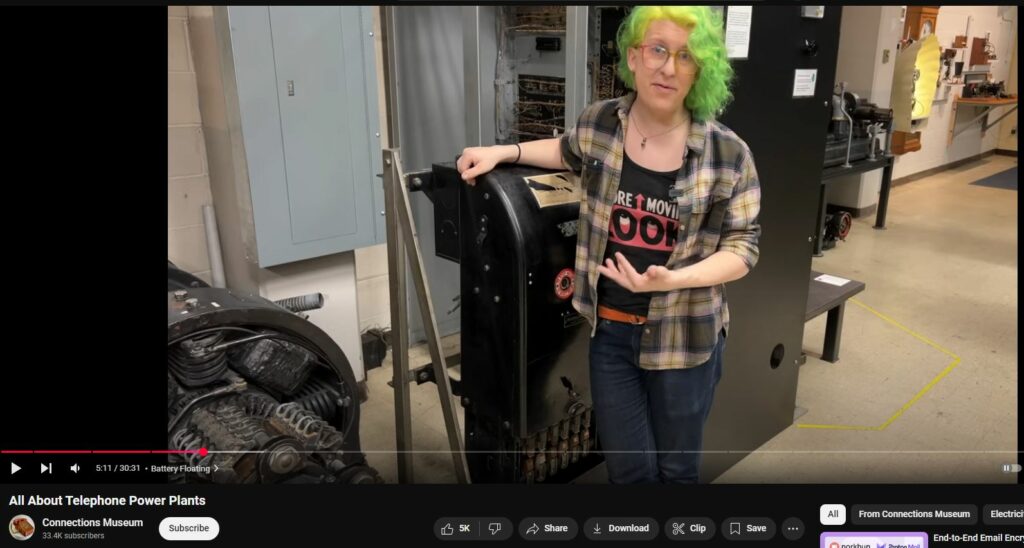

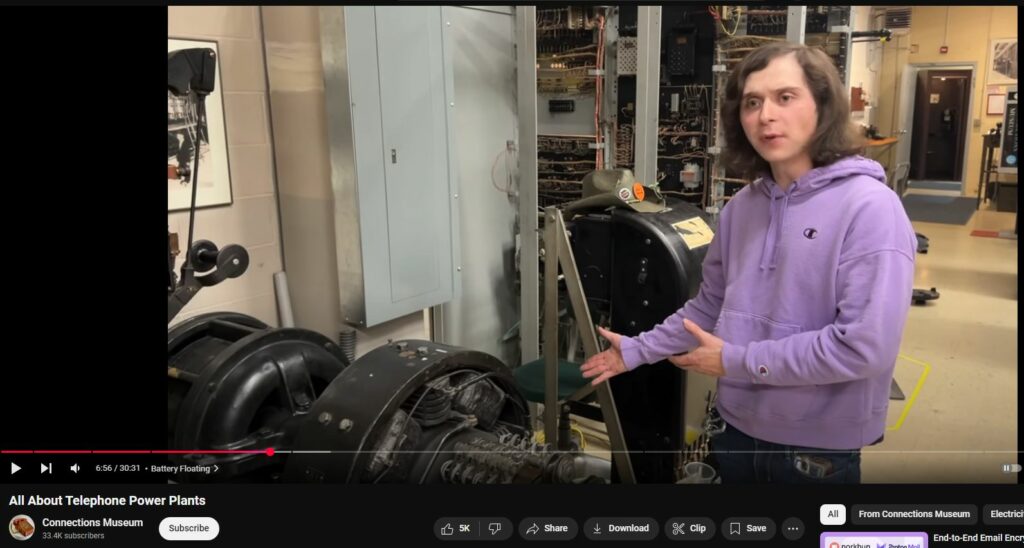
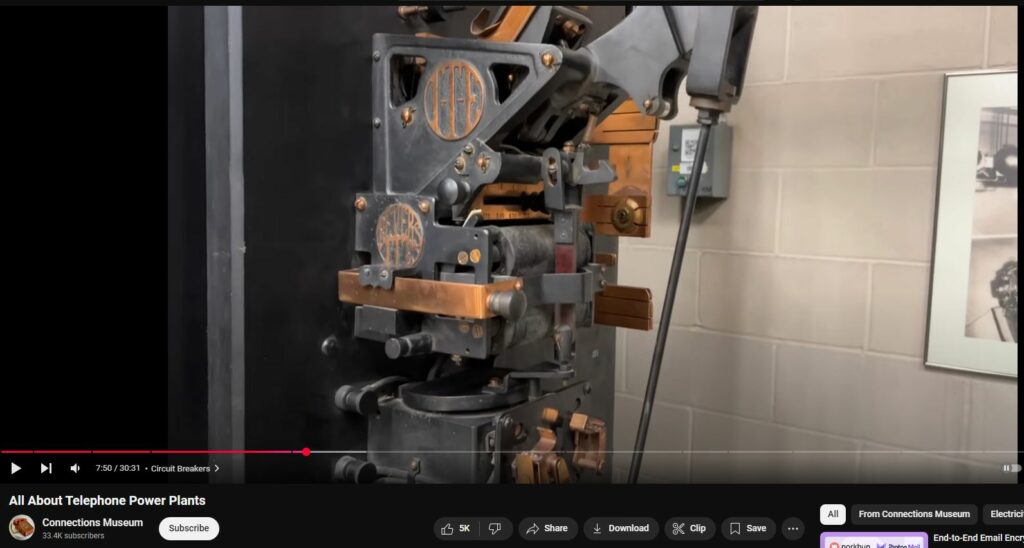
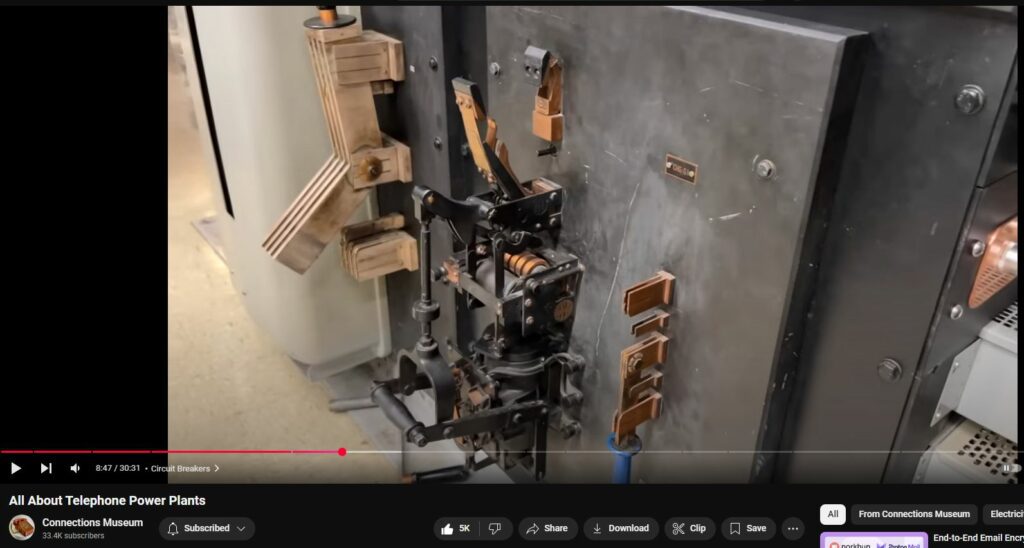

ABOVE and BELOW: Mercury arc rectifier
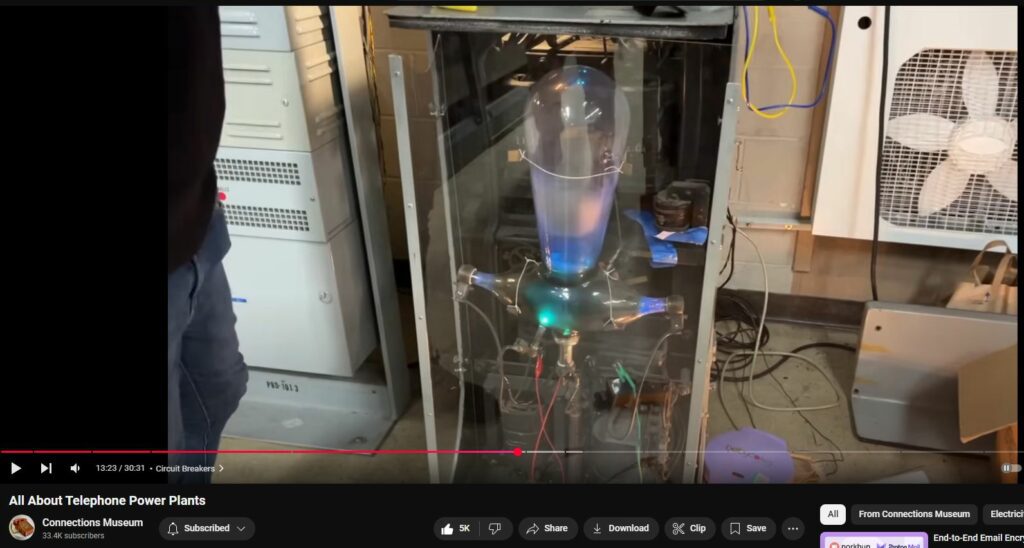

ABOVE: Telephone system runs at -48VDC (positive end of battery is connected to “ground”) to reduce electrolysis corrosion.
